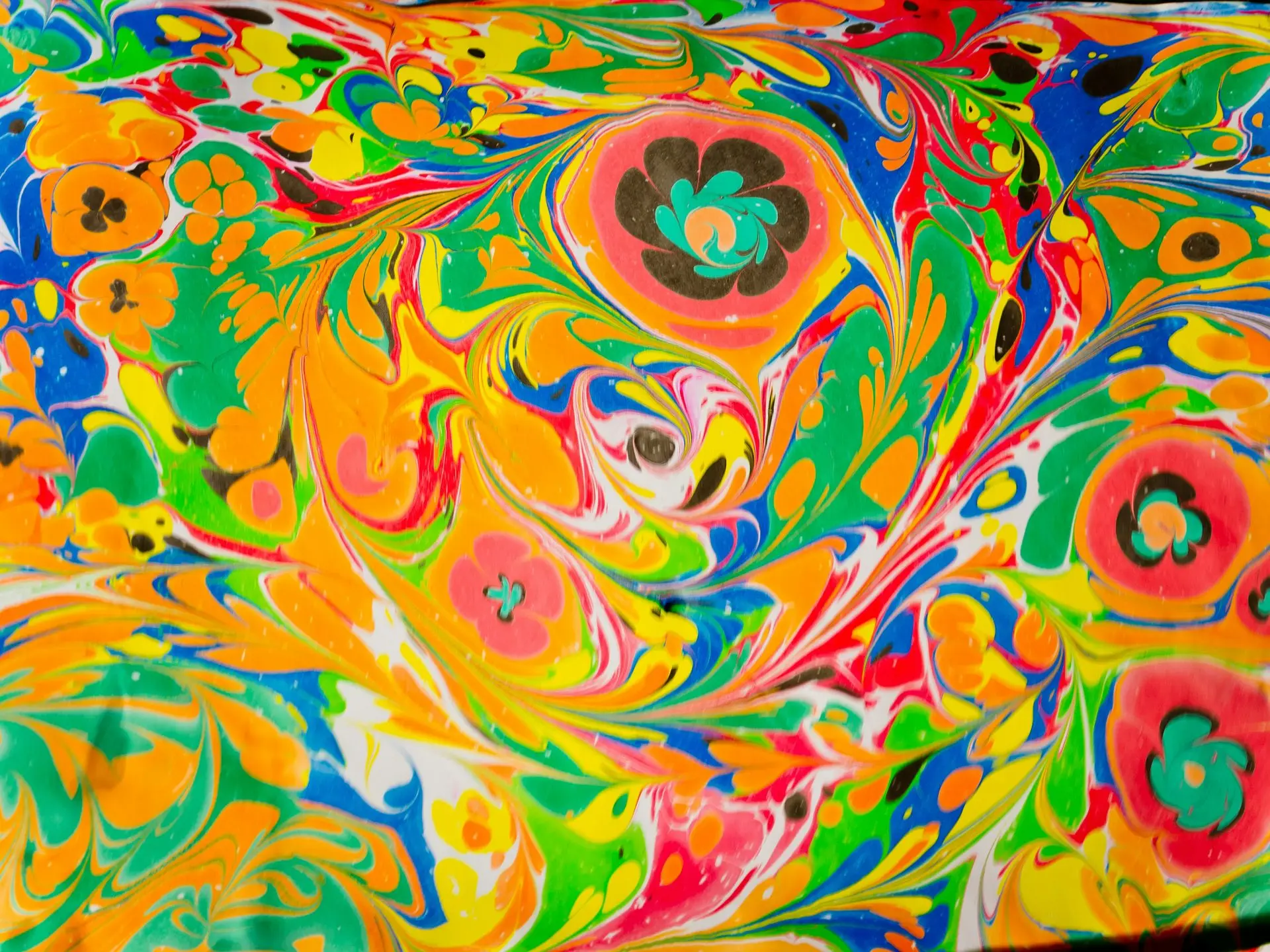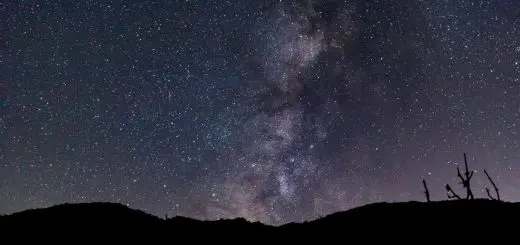Skinwalkers: Shapeshifters in Native American Lore

Looking for more amazing products? Check out our online store and explore our collection here! Happy shopping!
Before diving in, please note: This post is for informational purposes only. If you’d like to know more about how we approach topics, feel free to check out our friendly Disclaimer Page.
Hey there, amazing readers! 
We’re committed to delivering quality posts, and your support (even just sticking around despite the ads) means everything to us. So, bear with us, and thanks for helping us keep the good vibes rolling. Now, on to the fun stuff!
TRANSLATE BUTTON AT THE END OF THE ARTICLE
A Quick Overview
Skinwalkers are some of the most intriguing figures in Native American folklore, particularly among the Navajo people.
These shapeshifters are said to possess the ability to transform into various animals or even other humans.
But beyond their supernatural abilities, skinwalkers embody a rich tapestry of cultural beliefs, fears, and values.
In this article, we’ll delve deep into the depths of skinwalker lore, uncovering their origins, cultural significance, and the myths that surround them.
So, grab a comfy seat, and let’s embark on this captivating journey together!
Exploring the Enigmatic World of Skinwalkers
When we think of skinwalkers, we often conjure images of dark forests and chilling tales whispered around campfires.
But the reality is much richer.
Skinwalkers are deeply woven into the fabric of many Native American cultures, particularly the Navajo.
These shapeshifters are often portrayed as malevolent beings who misuse their powers for harm.
The stories about skinwalkers evoke a sense of fear and reverence.
They serve as cautionary tales, warning against certain behaviors and practices deemed taboo by the community.
Some believe that skinwalkers can steal the skins of animals or even humans, using these skins to disguise themselves.
This transformation is not just physical; it’s a metaphorical journey that speaks to the complex relationship between humans, nature, and the spiritual world.
The very mention of a skinwalker can send shivers down one’s spine.
These beings are often linked with witchcraft and dark magic, seen as the antithesis of the healing practices upheld by traditional medicine people.
Yet, there’s more to skinwalkers than just fear; they reflect the moral and ethical dilemmas faced by the communities that tell their stories.
The Origin Stories: How Skinwalkers Came to Be
Many skinwalker legends begin with a powerful witch or medicine person who chooses to misuse their abilities.
This choice marks the transformation from a healer to a skinwalker, a being that embodies both human and animal traits.
The stories vary widely, but they often include a pivotal moment when this person turns to darkness, often driven by jealousy, desire for power, or revenge.
In some narratives, the witch is said to perform a dark ritual that allows them to take on animal forms.
This transformation is often accompanied by a loss of moral compass, leading to the perpetration of harm against others.
Many tales also emphasize how skinwalkers can affect the natural world, communicating with animals in ways that are incomprehensible to ordinary humans.
There’s a fascinating interplay here between good and evil.
These stories remind us of the complexities of human nature.
They serve as a metaphor for the choices we make and how they define who we are.
The folklore acts as a mirror to our own lives, making us ponder the consequences of our actions.
Meaning Behind the Name: Understanding "Skinwalker"
The term "skinwalker" comes from the Navajo language, specifically the word yee naaldlooshii, which translates to “he who walks on all fours.” This phrase highlights the shapeshifting capabilities of these beings, emphasizing their connection to the animal kingdom.
The name itself evokes a sense of otherness.
It reminds us that skinwalkers are not bound by the same rules that govern human behavior.
They exist in a space where the lines between human and animal blur, illustrating the fluidity of identity in Native American cosmology.
Moreover, the idea of "skin" in their name also suggests a deeper meaning.
It can represent both the physical and spiritual aspects of existence.
Skinwalkers are often portrayed as having the ability to shed their human identities, donning the skins of animals to take on their forms.
This ability speaks to the broader theme of transformation present in many Indigenous narratives, where identity is not fixed but rather a dynamic interplay of experiences and choices.
Cultural Significance of Skinwalkers in Native American Traditions
In many Native American cultures, skinwalkers serve multiple purposes.
They are not only figures of fear but also embody important cultural lessons and values.
The tales of these shapeshifters often emphasize the consequences of straying from societal norms and the dangers of envy and malevolence.
These stories play an essential role in the education of the young within the community.
Elders use skinwalker tales to teach children about respect, the importance of community, and the need for moral integrity.
They serve as cautionary tales that highlight the potential dangers lurking within the human soul.
Moreover, skinwalkers also represent a deeper understanding of life, death, and the interconnectedness of all beings.
They remind us that our actions can have profound impacts on the world around us, and failing to honor this connection can lead to dire consequences.
In a way, skinwalker lore embodies the duality of existence, illustrating the balance between light and dark, and the continuous dance between good and evil in every individual.
Traits and Abilities: What Makes Skinwalkers Unique?
Skinwalkers are characterized by a range of supernatural traits that set them apart from ordinary beings.
One of the most notable abilities is their shapeshifting prowess.
They can transform into different animals, often selecting those that are significant within their cultural context, such as wolves, coyotes, or even birds.
But the transformation isn’t merely physical.
Skinwalkers also possess heightened senses and an uncanny ability to communicate with animals.
This connection allows them to navigate the natural world with ease, using their powers for both stealth and cunning.
Additionally, the legends often describe skinwalkers as possessing other magical abilities.
They might cast spells, inflict disease, or even control the weather.
Such traits make them formidable foes and deeply feared figures in folklore.
However, not all skinwalker abilities are malevolent.
Some stories depict them as protectors of the land, reminding us that power can be wielded for both good and ill.
This duality reflects the complex relationship Indigenous communities maintain with the natural world—one that is based on respect, understanding, and sometimes, fear.
The Role of Medicine People in Skinwalker Legends
Medicine people, or healers, play a vital role in skinwalker narratives.
They are often portrayed as the antithesis of skinwalkers, embodying healing, wisdom, and light.
In many tales, these practitioners are the ones who confront skinwalkers, using their own powers to protect the community from harm.
The relationship between medicine people and skinwalkers is complex.
On one hand, medicine people are revered for their knowledge of herbs, healing practices, and connection to the spiritual world.
On the other, skinwalkers are often former medicine people who have turned to the dark side, illustrating the fine line between good and evil.
In many stories, medicine people carry the burden of knowledge about skinwalkers.
They understand the importance of maintaining balance within the community.
Their role is not solely to combat evil; they also serve as guides, helping others navigate the moral complexities of life.
This dynamic highlights the importance of choice in the narratives surrounding skinwalkers.
Every individual has the potential to choose the path of light or darkness, and the stories serve as a reminder of the consequences that follow each choice.
The teachings of medicine people offer a way to reinforce the values upheld by the community.
Skinwalker Myths: Fact or Fiction in Modern Society?
As we delve into modern society, the myths surrounding skinwalkers often blur the lines between fact and fiction.
Many people outside Native American communities are fascinated by these tales, leading to a proliferation of stories in popular culture.
However, this curiosity sometimes oversimplifies or misrepresents the deeper meanings behind skinwalker lore.
In a world dominated by skepticism and rational thought, skinwalker legends can be dismissed as mere fantasy.
But for many Indigenous people, these stories hold significant cultural truths and moral lessons.
They are not simply tales of shapeshifting; they encapsulate the values, fears, and teachings of generations.
Moreover, the sensationalism often found in media portrayals can dilute the richness of these narratives.
Skinwalkers are transformed into monsters, stripped of their cultural significance, and reduced to horror movie tropes.
This commodification can be frustrating and disrespectful to those who hold these beliefs dear.
It’s essential to approach skinwalker myths with respect and a willingness to learn.
Engaging with these stories in their cultural context can provide valuable insights into the worldviews of Native American communities.
Rather than viewing them as mere tales, we can see them as windows into a complex understanding of morality, nature, and the human experience.
Famous Skinwalker Encounters Through the Ages
Throughout history, there have been numerous reported encounters with skinwalkers, each adding to the rich tapestry of their folklore.
Many of these tales come from individuals who claim to have witnessed strange, unexplainable events in remote areas.
One famous account comes from a Navajo man who recounted an experience in which he saw a figure darting between trees at night.
The figure, he described, had the ability to shift in and out of shadows, making it appear as if it were part of the landscape.
This eerie encounter left him shaken, leading him to seek guidance from his community’s elders.
Another famous story involves a hunter who claimed to have been stalked by a skinwalker while tracking game in the mountains.
He described the creature as resembling a large wolf but with a distinctly human-like gaze.
This blend of human and animal characteristics adds to the unsettling nature of skinwalker lore.
Such encounters often serve as cautionary tales, warning against venturing too far into the unknown.
They remind us that the natural world holds mysteries beyond our understanding and that respect for these boundaries is paramount.
How Skinwalkers Are Portrayed in Popular Culture
In recent years, skinwalkers have become a popular subject in movies, TV shows, and books.
Shows like "Supernatural" and films such as "Skinwalker Ranch" have introduced these figures to broader audiences.
However, the portrayal often strays far from traditional narratives.
While some creators aim to respectfully represent skinwalker lore, many fall into the trap of sensationalizing these figures.
They become mere monsters, stripped of their cultural significance and reduced to jump scares.
This approach can alienate those who view skinwalkers as integral to their cultural narratives.
It’s worth noting that in popular culture, skinwalkers are frequently depicted as solitary figures, which contradicts their often communal nature in Native American stories.
In traditional tales, skinwalkers are often tied to larger moral lessons and community values, which are lost in these adaptations.
Despite the misrepresentations, the fascination with skinwalkers continues to grow.
It’s a reminder of how stories can transcend cultures, evolving and adapting in new ways.
Engaging with these portrayals can spark conversations about the importance of cultural sensitivity and understanding.
Respecting Traditions: The Importance of Cultural Sensitivity
As we explore the world of skinwalkers, it’s crucial to approach these stories with respect and sensitivity.
Cultural narratives hold deep meanings for the communities that share them.
When discussing skinwalkers, it’s essential to be mindful of the cultural context and significance behind the tales.
For many Native Americans, skinwalkers are not just fictional characters; they represent real fears, teachings, and moral dilemmas.
Engaging with these stories requires an understanding of the values and beliefs that underpin them.
This understanding allows for a more respectful dialogue that honors the traditions of Indigenous cultures.
It’s also important to recognize that not all Native American communities view skinwalkers in the same way.
There are various interpretations and beliefs, and listening to these diverse perspectives enriches our understanding.
Being an ally means actively seeking to learn about and respect the cultural narratives of others.
By doing so, we can create an environment where stories are shared, understood, and appreciated for their depth and complexity.
Debunking Common Misconceptions About Skinwalkers
Skinwalkers often find themselves at the center of many misconceptions.
One prevalent myth is that they are merely fictional characters, akin to vampires or werewolves.
While the tales may sound fantastical, for many Indigenous people, they carry profound cultural significance.
Another common misunderstanding is that skinwalkers exclusively represent evil.
While many stories portray them as malevolent beings, that’s only part of the story.
Skinwalker narratives also encompass themes of choice, morality, and the duality of human nature.
Additionally, skinwalkers are sometimes incorrectly portrayed as being easily identified or caught.
In reality, their shapeshifting abilities and cunning nature make them elusive figures, symbolizing the unpredictable aspects of life and nature.
By addressing these misconceptions, we can foster a more accurate understanding of skinwalker lore, recognizing it as a vital part of a rich cultural heritage rather than mere fiction.
Embracing the Mystique: The Allure of Skinwalker Lore
Skinwalker tales hold a unique allure, drawing people into their mysterious narrative web.
There’s something inherently captivating about shapeshifters, the idea of beings who can transcend the boundaries of human existence.
These stories tap into our collective curiosity about the unknown and the supernatural.
As I explore these legends, I often find myself reflecting on the deeper messages they convey.
Skinwalkers remind us that the world is full of mysteries, and there are forces at play beyond our comprehension.
They challenge us to consider our beliefs, choices, and the moral dilemmas we face daily.
Moreover, the mystique surrounding skinwalkers encourages conversations about identity, belonging, and the interconnectedness of all life.
These tales serve as a reminder that our actions have consequences and that we must navigate the world with humility and respect.
Ultimately, the allure of skinwalker lore lies not just in their supernatural abilities but in the rich cultural history they embody.
As we engage with these stories, we can appreciate the depth and complexity of Indigenous narratives, fostering a greater understanding of the world around us.
Conclusion
Skinwalkers occupy a fascinating space within Native American folklore, representing a blend of fear, cultural wisdom, and moral lessons.
As we venture into their enigmatic world, we uncover intricate narratives that challenge our understanding of identity and the consequences of our choices.
By respecting the traditions and stories of Native American cultures, we can appreciate the depth of skinwalker lore and its significance in teaching us about human nature.
As we navigate our own lives, these tales serve as a reminder of the balance we must maintain between light and dark, good and evil.
So, the next time you hear a skinwalker story, take a moment to reflect on its meaning.
Embrace the mystery, honor the culture, and let these enchanting tales inspire you to explore the world with a sense of wonder and respect.

The Enlightenment Journey is a remarkable collection of writings authored by a distinguished group of experts in the fields of spirituality, new age, and esoteric knowledge.
This anthology features a diverse assembly of well-experienced authors who bring their profound insights and credible perspectives to the forefront.
Each contributor possesses a wealth of knowledge and wisdom, making them authorities in their respective domains.
Together, they offer readers a transformative journey into the realms of spiritual growth, self-discovery, and esoteric enlightenment.
The Enlightenment Journey is a testament to the collective expertise of these luminaries, providing readers with a rich tapestry of ideas and information to illuminate their spiritual path.
Our Diverse Expertise
While our primary focus is on spirituality and esotericism, we are equally passionate about exploring a wide range of other topics and niches 

To ensure we provide the most accurate and valuable insights, we collaborate with trusted experts in their respective domains 
Our blog originally focused on spirituality and metaphysics, but we’ve since expanded to cover a wide range of niches. Don’t worry—we continue to publish a lot of articles on spirituality! Frequently visit our blog to explore our diverse content and stay tuned for more insightful reads.
Hey there, amazing reader! 
Check out our store here and take a peek at some of our featured products below! Thanks for being awesome!













